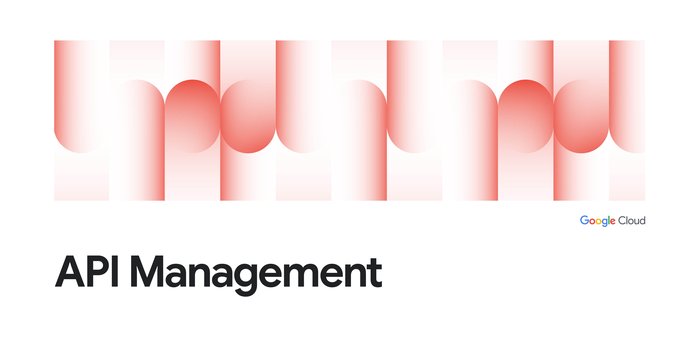Digital Transformation: Executing on the Plan
Michael Endler
AI Editor, Google Cloud
In this series of blog posts, we’ve been delving into the common ingredients we’ve discovered in working with hundreds of enterprises on their digital transformation journeys. In the the previous post, we explored the key aspects of alignment. In the final post of this series, we’ll wrap up with a discussion about the important elements of execution.
As we said in the first post of this series, aspiration is easy in business, but execution is hard. Over the years, we’ve observed many companies that try to execute their digital transformation plans but encounter strong headwinds due to a lack of executive support, basic disagreements about goals, and other problems that crop up due to insufficient vision and alignment.
When we assess execution, we look at how effectively the business can build and scale available APIs. This encompasses the software development lifecycle (SDLC), the ability to attract and retain strong technical talent, and “self-service”—the ease with which an organization’s APIs can be consumed.
Software development lifecycle (SDLC)
If you attempt to deploy an API-first approach using old governance and waterfall methods, you won’t achieve the speed, innovation, and cost reduction goals that motivated the transformation in the first place. Executing in the digital world means maintaining leverage amid ever-changing customer preferences.To accomplish this, leading companies build APIs using modern, agile, iterative methods. Test-driven and behavior-driven design, as well as a focus on automation, are all parts of an API-first approach. Your SDLC is tightly coupled with how you fund and measure project success—in fact, it is an expression of how projects are funded and what is valued (project forecasting accuracy prioritized over customer experience, for example). Therefore, maturity in this dimension is predicated on proper alignment in leadership, metrics, and funding.
Talent
Developers are a key link in the digital value chain; they translate the raw materials of a company’s data and functions into apps and digital experiences that create value for the business. An organization’s ability to attract and develop strong technical talent is among its most important digital competencies.Leading companies often require API skills of all software developer roles, and a solid understanding of digital business—including the role of APIs—should be required of all business roles. The API program will only produce results if it is paired with agile governance and funding, so organizations should empower developers to adopt modern development best practices such as automation and DevOps.
Talent retention is also crucial, especially as digital business skills have become more hotly coveted by employers. To keep developer engagement high and help teams produce impact, competitive enterprises establish communities of practice, including API evangelists and a developer portal to share updates, distribute best practices, and help developers more quickly and easily explore, test, and use APIs.
Self-service
Self-service is where concepts—such as API-first strategies and developer-driven value chains—meet reality. If the developers you engage (internal or external) are not able to quickly consume your APIs, the program will fail to deliver impact. The gold standard for TTFHW, or “Time to First ‘Hello World’,” is five minutes.To meet this goal, enterprises frequently build developer portals. Fully-developed portals typically include API catalogs to help developers quickly find the resources they need; API keys, sample code, interactive documentation, and testing tools that let developers start using APIs immediately; and forums and blogs to foster community.
Next steps
Companies have always relied on one another to create business value: component suppliers feed manufacturers who feed distributors, and so on. But in the digital world, the complexity and fluidity of these relationships reach a new level.Enterprises can extend their services with scale and speed that would have been unthinkable just a few years ago. They can focus on their core strengths while leveraging resources from other ecosystem participants, creating richer, more valuable digital experiences than most companies have the resources to produce alone and spreading their businesses to new audiences and markets. The speed of change and the range of opportunities are dizzying—which is why it’s so easy for businesses to hit hurdles or chart the wrong course.
Though there is no single “correct” path to digital competitiveness, there are common dimensions that virtually all digitally sophisticated organizations share and common relationships among those dimensions, regardless of industry.
To chart next steps, businesses should understand not only how these dimensions currently manifest within their organization but also how the dimensions interrelate—how strength in one area, such as funding, may be a prerequisite to excellence in another, such as agile software development cycles. This perspective helps business leaders to prioritize which steps, among seemingly infinite options, will actually bring the company closer to its digital transformation goals.
To help organizations with this process, we launched Apigee Compass, an online tool to help businesses chart a path through their digital transformations. Apigee Compass curates and delivers the information we've gathered and the lessons we've learned from working with Walgreens, Pitney Bowes, Magazine Luiza, Experian, and hundreds of other companies. The interactive, self-service tool can be used by anyone to assess their organization's digital maturity and chart a path to digital success.
Once you’ve assessed your business with Apigee Compass, focus on the dimensions in which your organization is weakest. Use the recommendations to understand what other dimensions this weakness affects as well as the steps you can take to remedy this weakness and advance to the next level of digital capability.
For more on the topics covered in this series, check out the eBook, “The Digital Transformation Journey" and explore Apigee Compass to get tailored recommendations for your company's digital journey.

